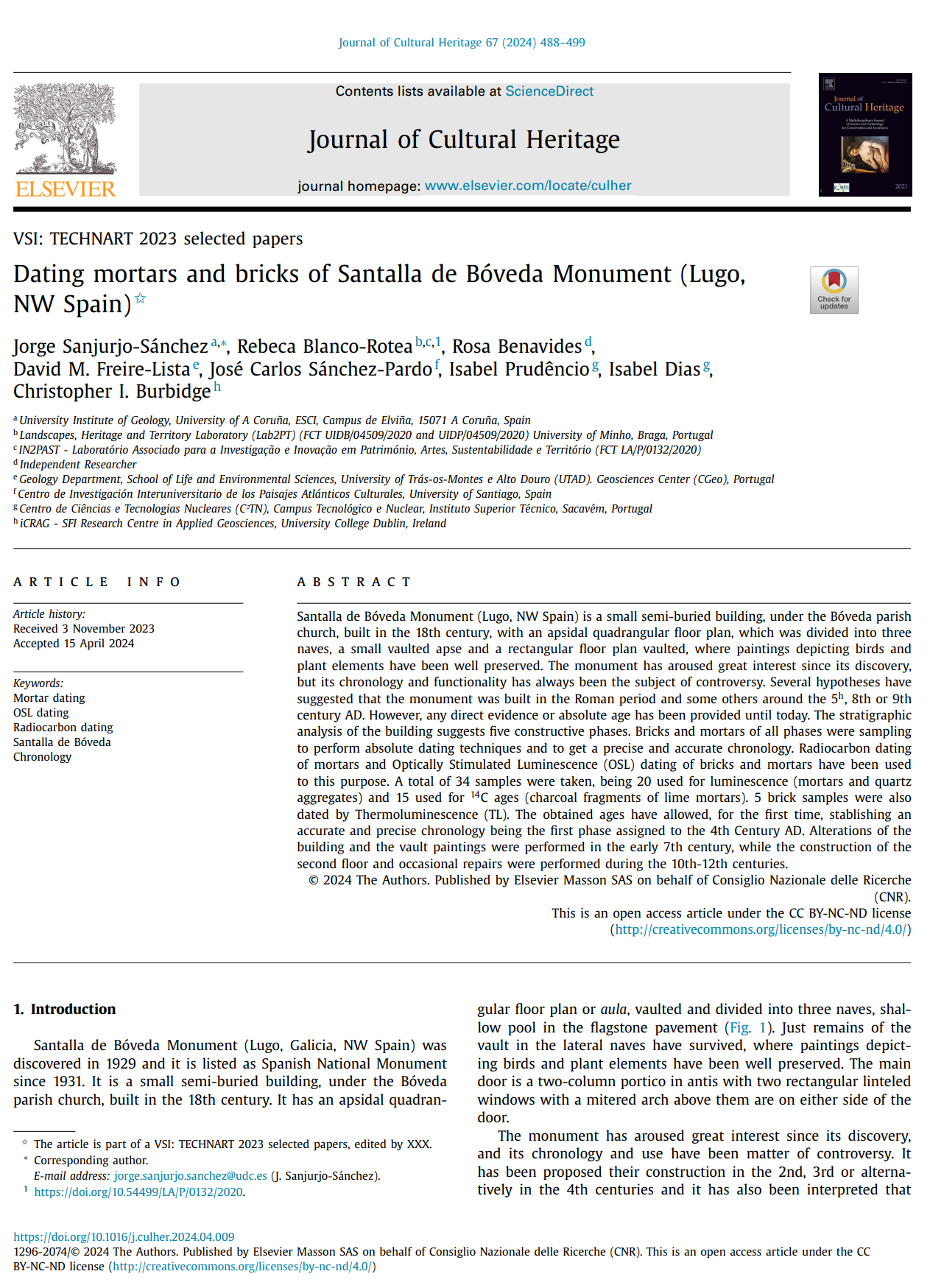News
Publication of the article "Dating of mortars and bricks of Santalla de Bóveda (Lugo, NW Spain), with Rebeca Blanco-Rotea in co-authorship
15 of april 2024 | Journal of Cultural Heritage
Published on

Santalla de Bóveda Monument (Lugo, NW Spain) is a small semi-buried building, under the Bóveda parish church, built in the 18th century, with an apsidal quadrangular floor plan, which was divided into three naves, a small vaulted apse and a rectangular floor plan vaulted, where paintings depicting birds and plant elements have been well preserved. The monument has aroused great interest since its discovery, but its chronology and functionality has always been the subject of controversy. Several hypotheses have suggested that the monument was built in the Roman period and some others around the 5h, 8th or 9th century AD. However, any direct evidence or absolute age has been provided until today. The stratigraphic analysis of the building suggests five constructive phases. Bricks and mortars of all phases were sampling to perform absolute dating techniques and to get a precise and accurate chronology. Radiocarbon dating of mortars and Optically Stimulated Luminescence (OSL) dating of bricks and mortars have been used to this purpose. A total of 34 samples were taken, being 20 used for luminescence (mortars and quartz aggregates) and 15 used for 14C ages (charcoal fragments of lime mortars). 5 brick samples were also dated by Thermoluminescence (TL). The obtained ages have allowed, for the first time, stablishing an accurate and precise chronology being the first phase assigned to the 4th Century AD. Alterations of the building and the vault paintings were performed in the early 7th century, while the construction of the second floor and occasional repairs were performed during the 10th-12th centuries.
Article: HERE